Weaning is specifically related to the transition from milk to solid food in mammals. When mammal mothers stop producing milk for their offspring and they begin to introduce solid food into their diet, this marks the start of the weaning process. The art of weaning is practiced across all 5000 + species of mammals. Milk production (lactation) is a defining characteristic of mammals. Suckling (nursing) is another one.
During weaning, the young animals start to eat more solid food and drink less milk from their mothers. As with humans, this transition is gradual and can take several weeks or months, depending on the species. Weaning is an important stage of development for animals, as it helps them learn to eat a varied and balanced diet, which is essential for their health and growth.
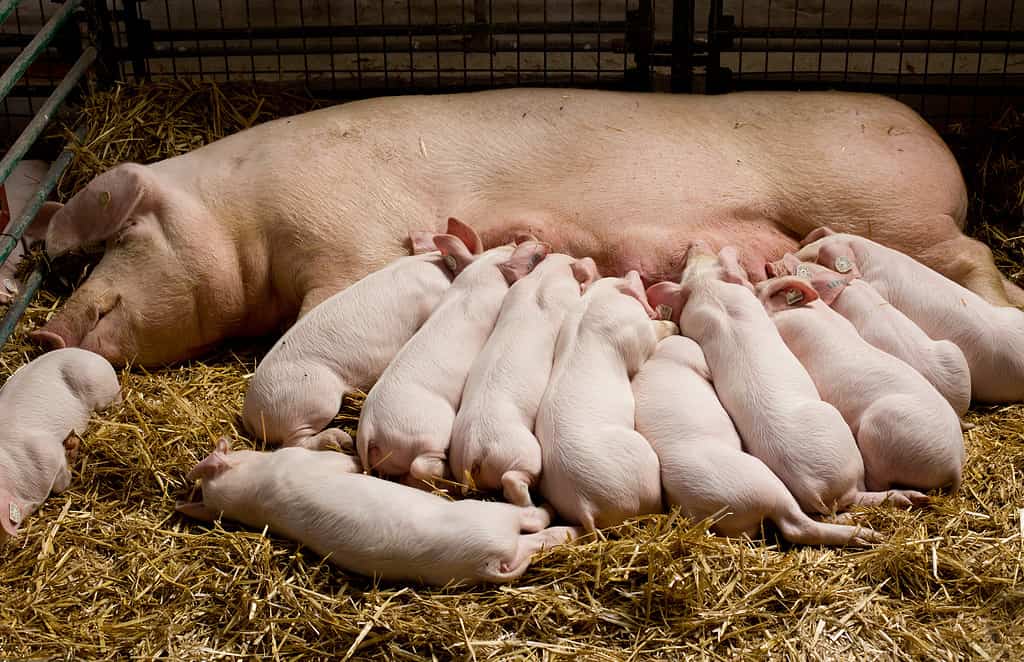
Milk production is a defining characteristic of mammals.
Suckling
is another one.
©Budimir Jevtic/Shutterstock.com
Weaning: Timeframe and Duration
The timeframe for weaning varies greatly among the different mammal species. It is influenced by a variety of factors including the size and maturity of the offspring, and the availability of other food sources. Weaning begins when the young start to consume solid food in addition to their mother’s milk. The transition to solid food can take several weeks or even months, and during this time, the mother gradually reduces the frequency and duration of nursing.
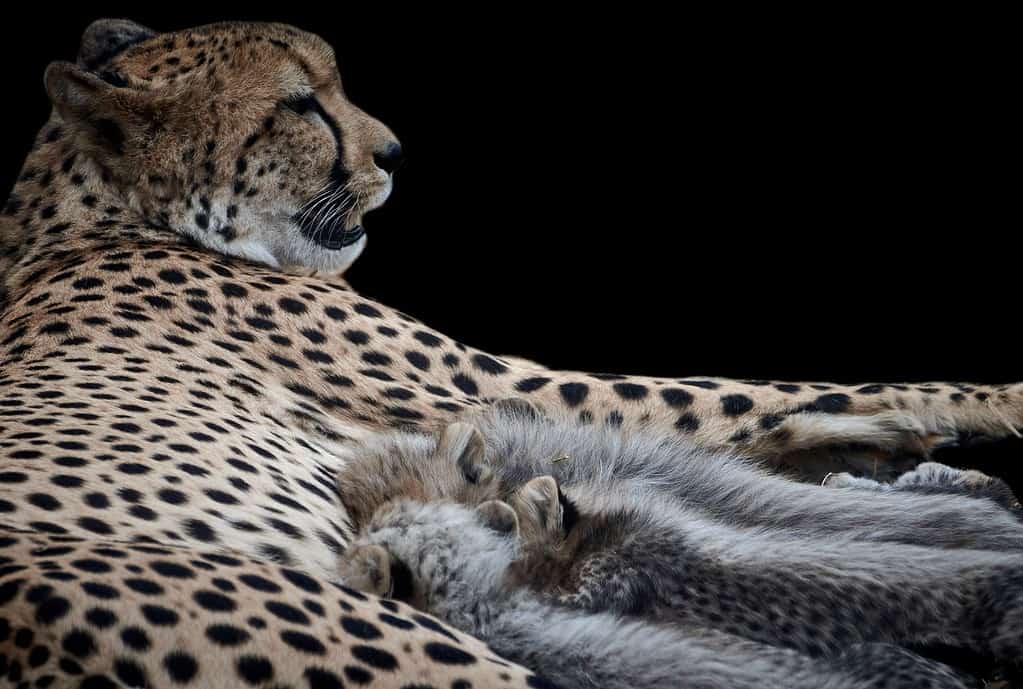
Weaning begins when the young start to consume solid food in addition to their mother’s milk.
©Thomas Marx/Shutterstock.com
The exact duration of weaning is different for different species. In humans, weaning usually occurs between 6 and 24 months of age, with most infants being fully weaned by around 2 years of age. In contrast, many species of primates, including chimpanzees and orangutans, continue to nurse for several years after birth.
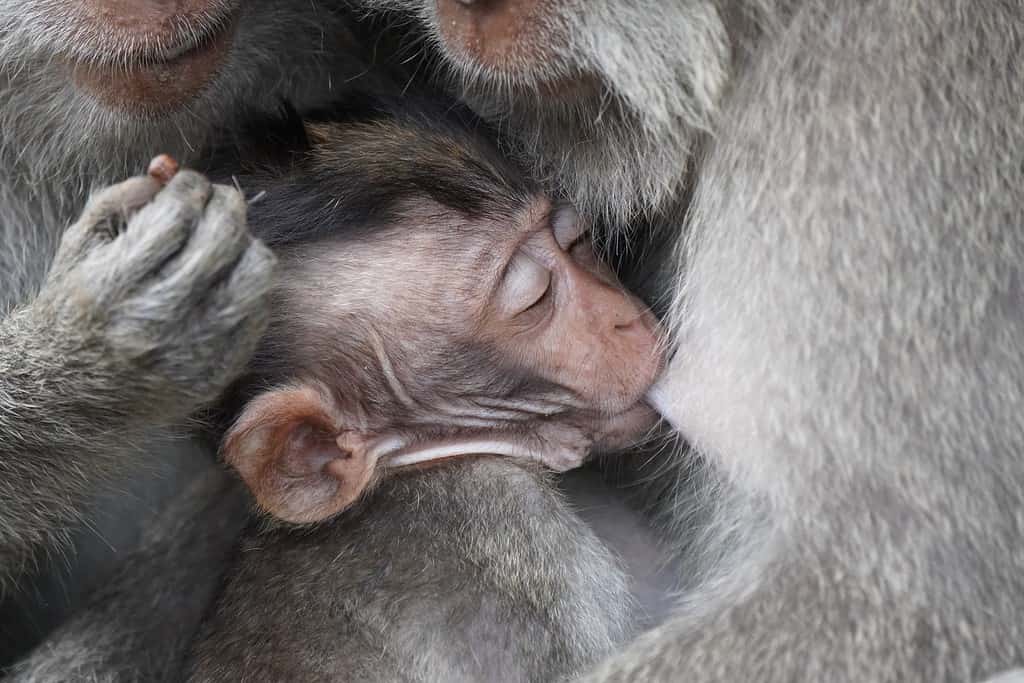
Many species of primates, including chimpanzees, continue to nurse for several years after birth.
©I PUTU ARNAWA/Shutterstock.com
In other mammals, weaning occurs relatively quickly, with the young becoming independent of their mother’s milk within a few weeks or months of birth. Most domestic livestock, like cows, sheep, and goats, are typically weaned within the first few months of life.
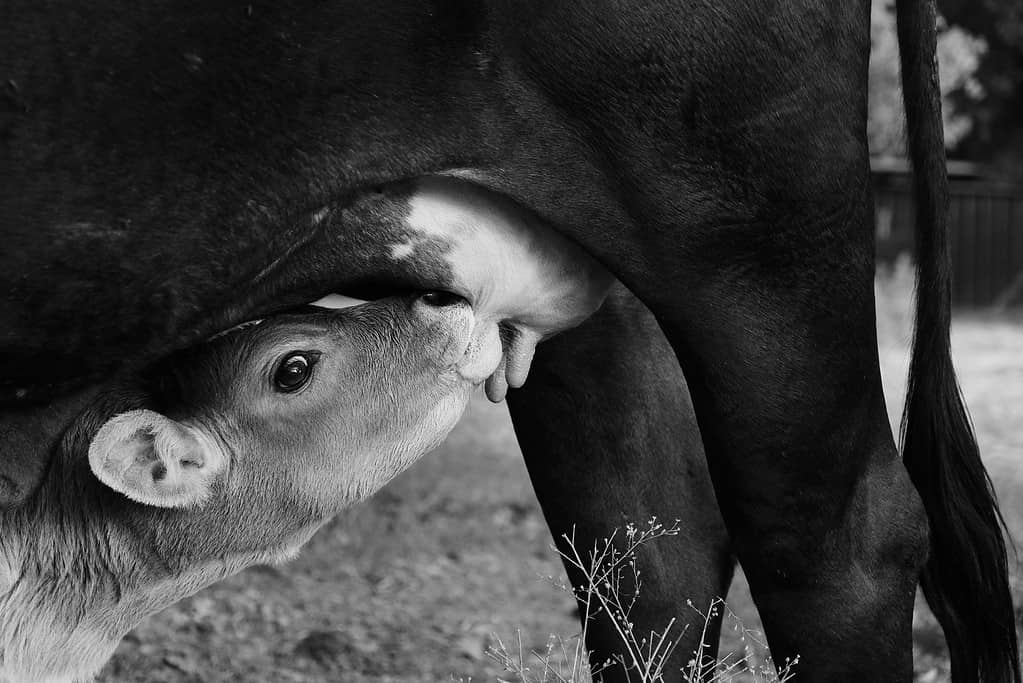
Most domestic livestock, like cows, are typically weaned within the first few months of life.
©cctm/Shutterstock.com
Comparison of Mammals: Mammary Glands and Age at Weaning
While all mammals have mammary glands, they don’t all have the same number of mammary glands. In general, the number of mammary glands is related to the number of offspring a species typically produces at one time. Most primates, including humans, have two mammary glands, which corresponds to the typical number of offspring that they produce at one time (i.e. one or two). Mammals that produce larger litters, such as rodents and rabbits, have several pairs of mammary glands. Mammary glands are also called breasts, udders, nipples, or teats. Mammals also have extremely variable durations of nursing/age at weaning. The table compares different mammals, their number of mammary glands, and their age at waning.
| Animal | Number of Mammary glands | Age at Weaning |
|---|---|---|
| Hooded seal | 2 pair/ 4 total | 3-4 days |
| Mice | 6 pair/ 12 total | 3-4 weeks |
| Squirrel | 4 pair/ 8 total | 6-10 weeks |
| Horses/Donkeys | 1 pair/ 2 total (udders) | 4-6 months |
| Bear | 4 pair/ 8 total | 6-8 months |
| Humpback whale | 1 pair/ 2 total | 6-12 months |
| Giraffe | 2 pair/ 4 total | 12-16 months |
| Elephant | 1 pair/ 2 total | 3-5 years |
| Chimpanzee | 1 pair/ 2 total | 4-5 years |
| Orangutan | 1 pair/ 2 total | 5-7 years |
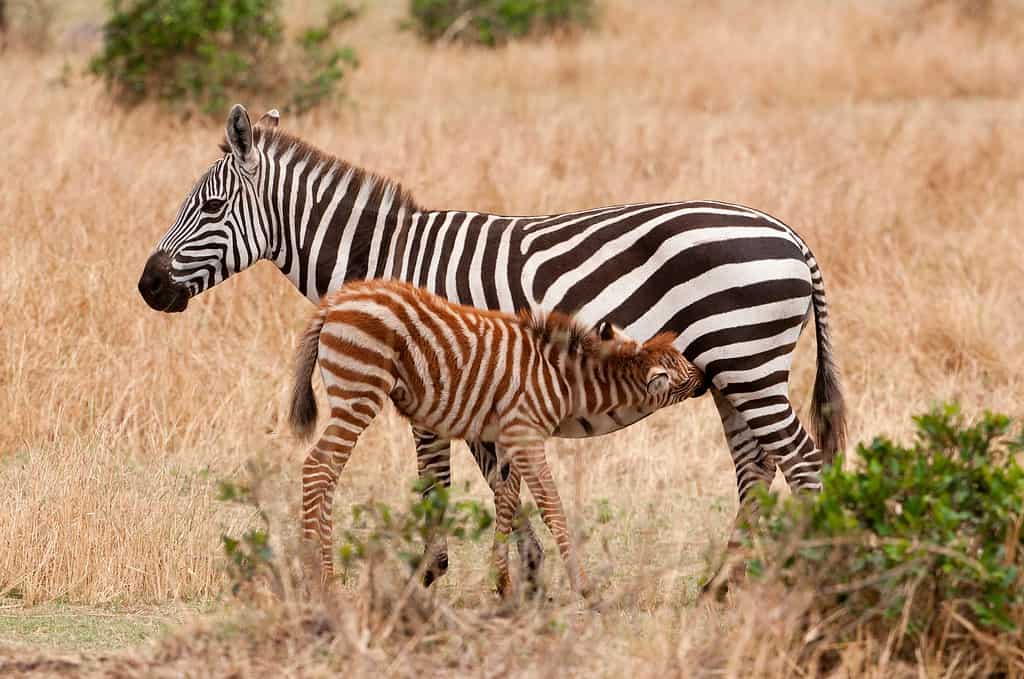
Zebras have one pair of mammary glands. Foals are weaned at approximately nine months of age.
©catahoulagirl/Shutterstock.com
Weaning: Lactation
Lactation is the process of producing and secreting milk from the mammary glands of female mammals. Lactation typically occurs after giving birth and is essential for providing nutrition to newborn offspring. The milk produced during lactation contains a balanced mix of nutrients, including proteins, fats, carbohydrates, vitamins, and minerals. As the offspring is being weaned, milk production lessens. Once the offspring has been weaned entirely, milk production will cease completely.
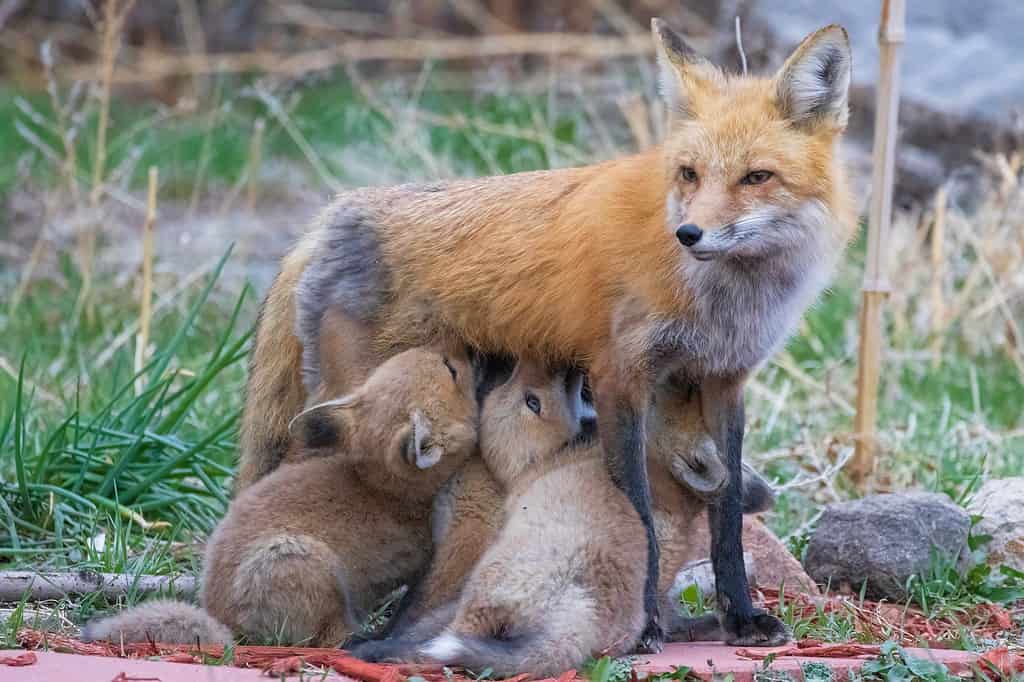
The milk produced during lactation contains a balanced mix of nutrients, including proteins, fats, carbohydrates, vitamins, and minerals.
©BlueBarronPhoto/Shutterstock.com
Superlatives of Weaning
Longest
Orangutans have the longest nursing period of any mammal, with infants nursing for an average of six to seven years. This extended nursing period is thought to be due to the slow maturation rate of orangutan infants, who are among the most dependent of any primate species. During this time, the mother provides her infant with not only nutrition, but also protection and socialization skills that will be important for survival in the wild.
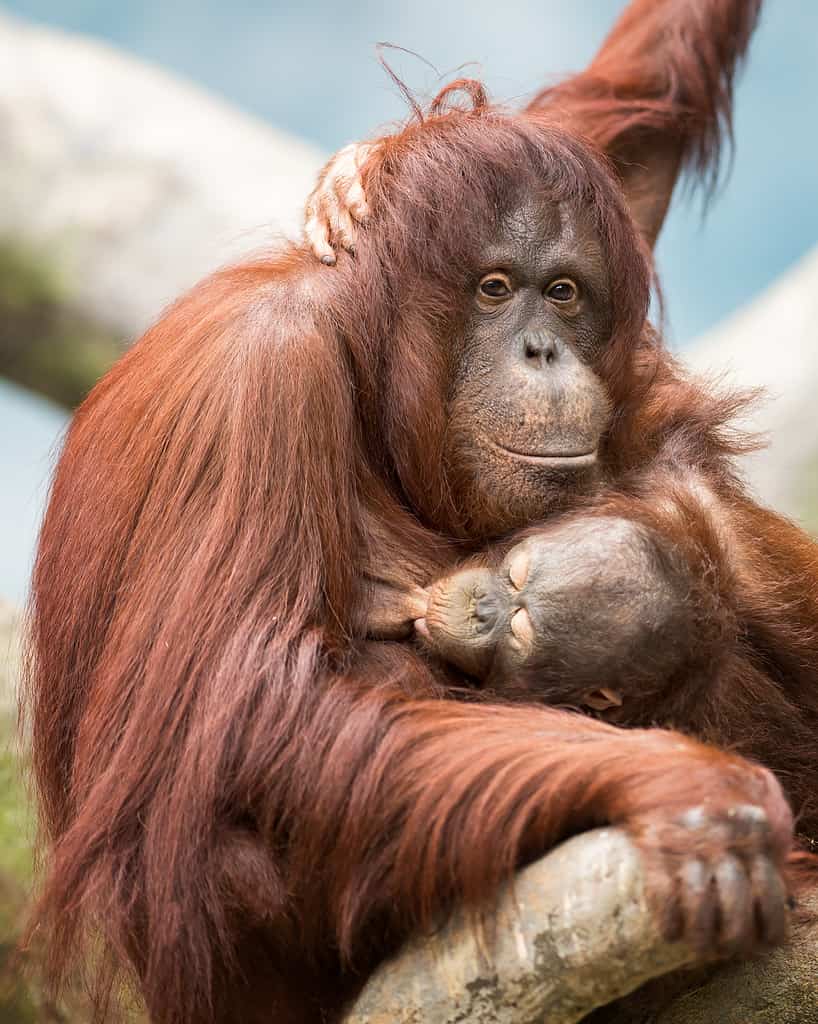
Orangutans nurse for an average of six to seven years.
©Nagel Photography/Shutterstock.com
Shortest
The mammal with the youngest known age at weaning is the hooded seal. Hooded seals (Cystophora cristata) only nurse for 3-4 days, which is the earliest known weaning for any mammal. During this time, the mother produces a high-fat milk that helps her pup rapidly gain weight and develop the necessary fat stores to survive in their cold and harsh environment. After the brief nursing period, the mother abandons her pup, and the young seal is left to fend for itself. The short lactation period is an adaptation to the challenging environment in which hooded seals live, where resources are limited and the pup needs to reach a certain size and weight quickly in order to survive.
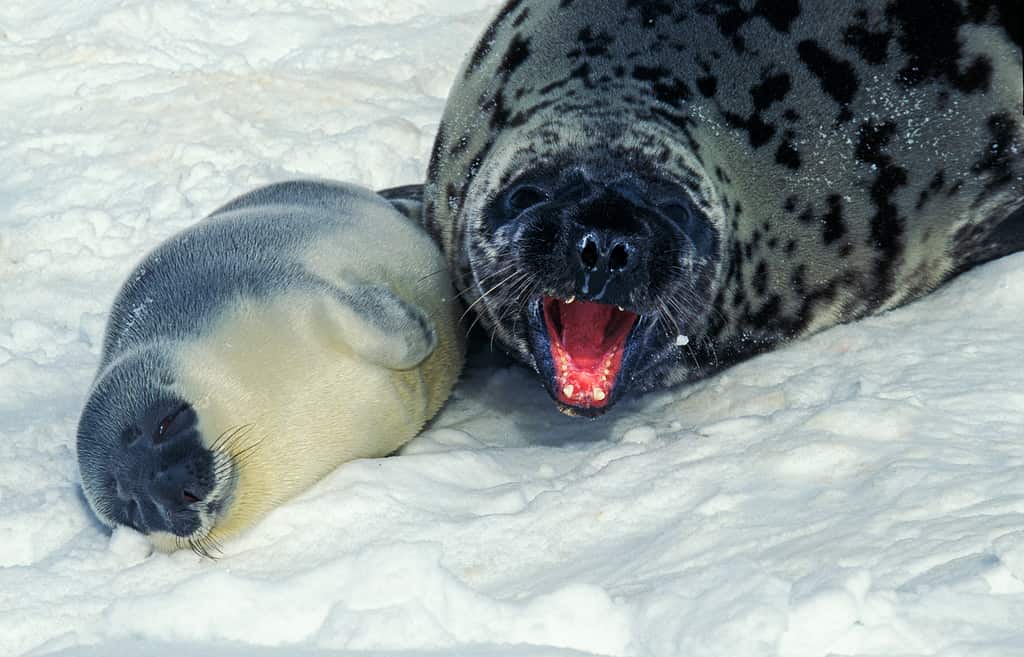
Hooded seals (
Cystophora cristata) only nurse for 3-4 days.
©slowmotiongli/Shutterstock.com
Largest
Elephant mammary glands are the largest mammary glands of any land mammal. The mammary glands of female elephants can weigh over 50 pounds (22 kg) and produce up to 14 gallons (50 liters) of milk per day. Elephant calves rely solely on their mother’s milk for the first few years of their lives. The size and productivity of the mammary glands are necessary to support the growth and development of such large offspring.
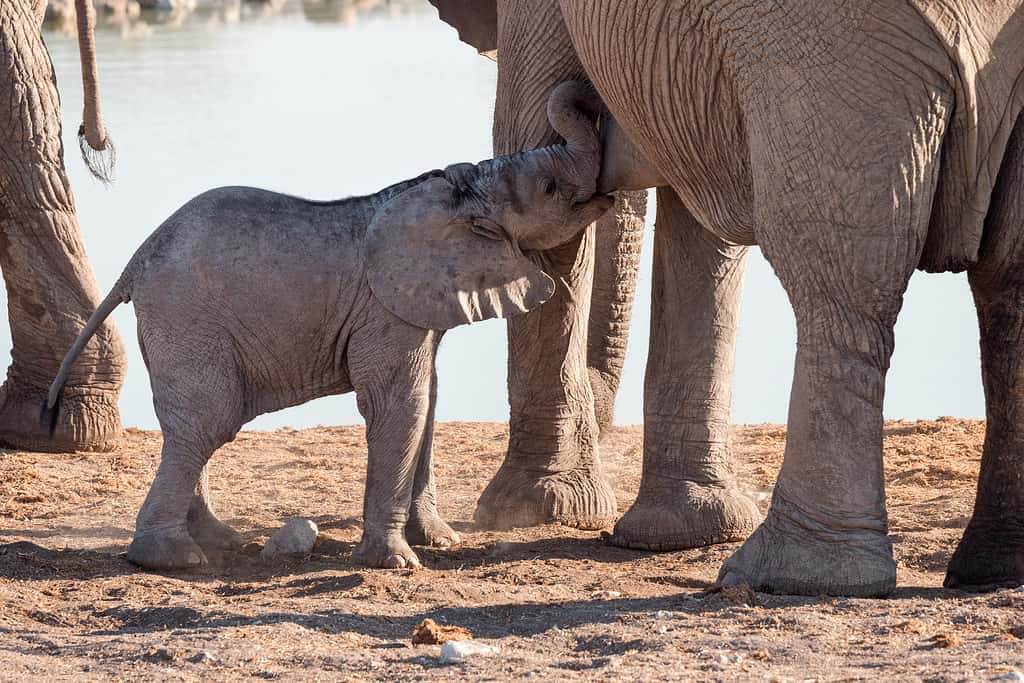
The mammary glands of female elephants can weigh over 50 pounds (22 kg) and produce up to 14 gallons (50 liters) of milk per day!
©Dietmar Rauscher/Shutterstock.com
Most Productive
Humpback whales produce a large amount of milk each day to feed their calf, which is known to be one of the fattest babies in the animal kingdom. It is estimated that humpback whales produce up to 52 gallons (200 liters) of milk per day! The mammary glands of humpback whales are located internally.
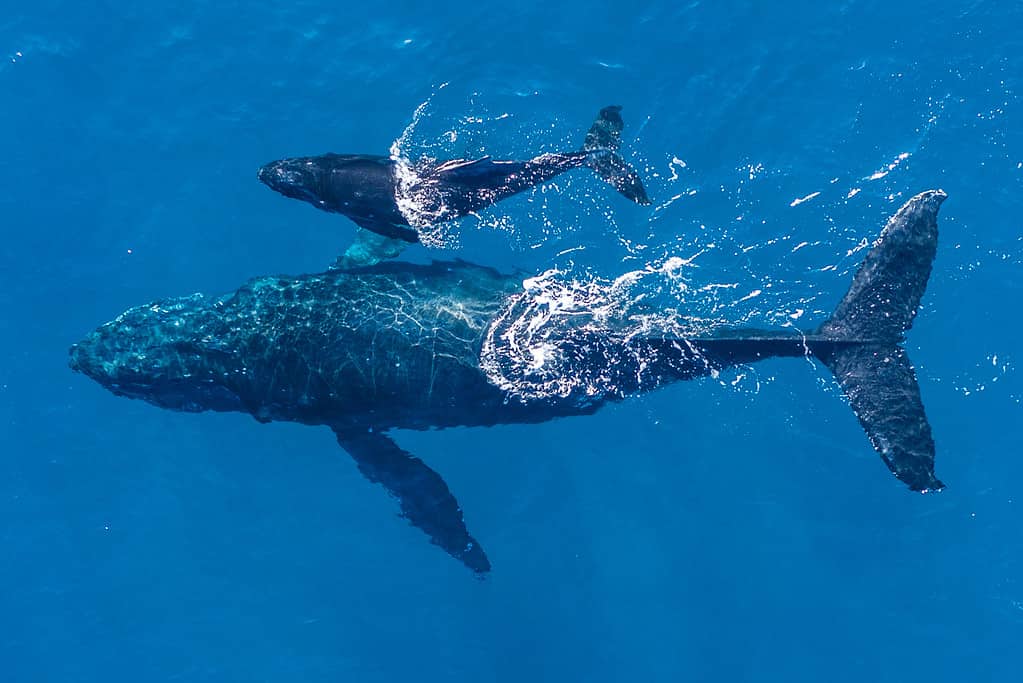
Humpback whales produce up to 200 liters 52 gallons (200 liters) of milk per day!
©Justin Berken/Shutterstock.com






























